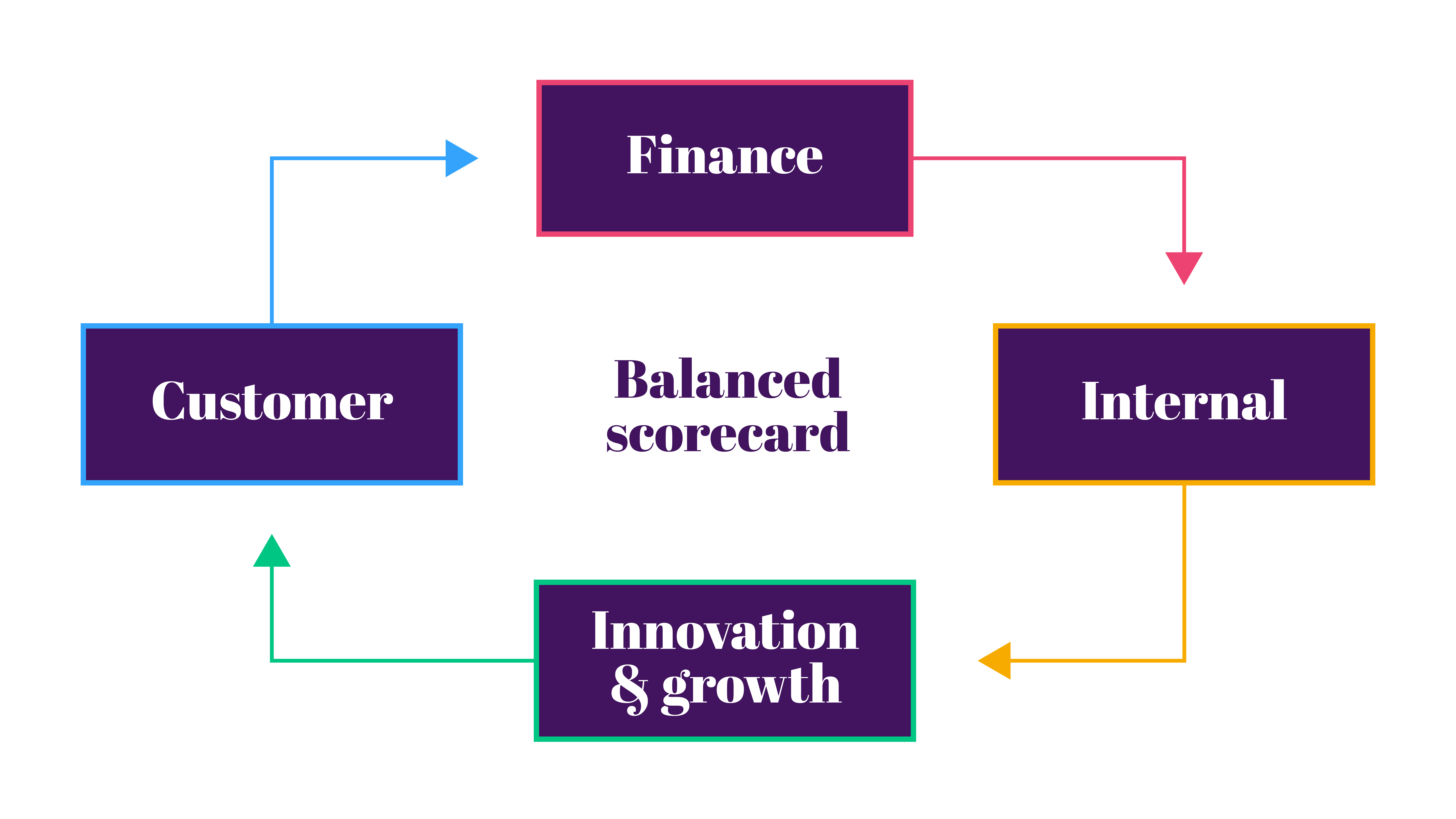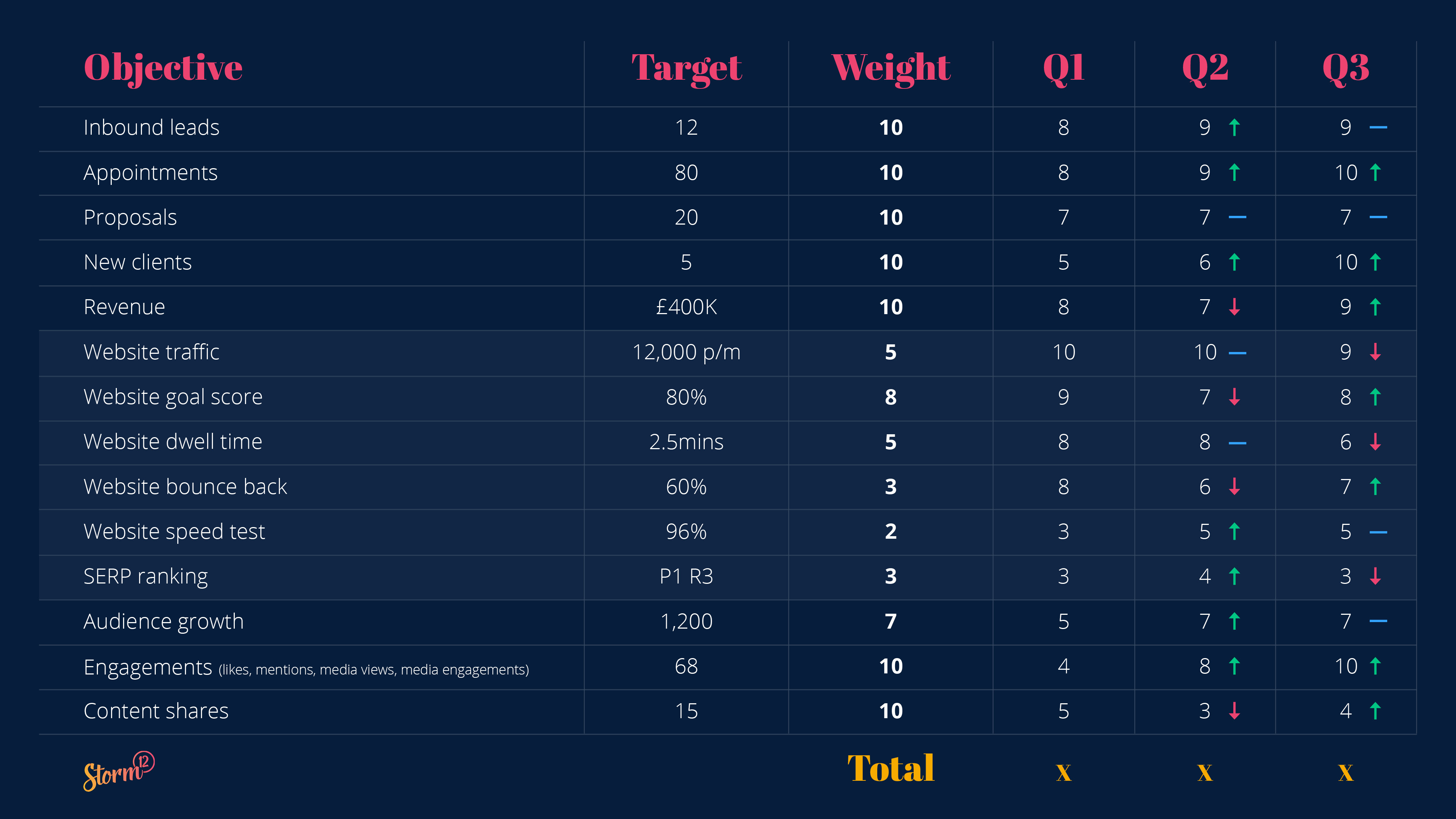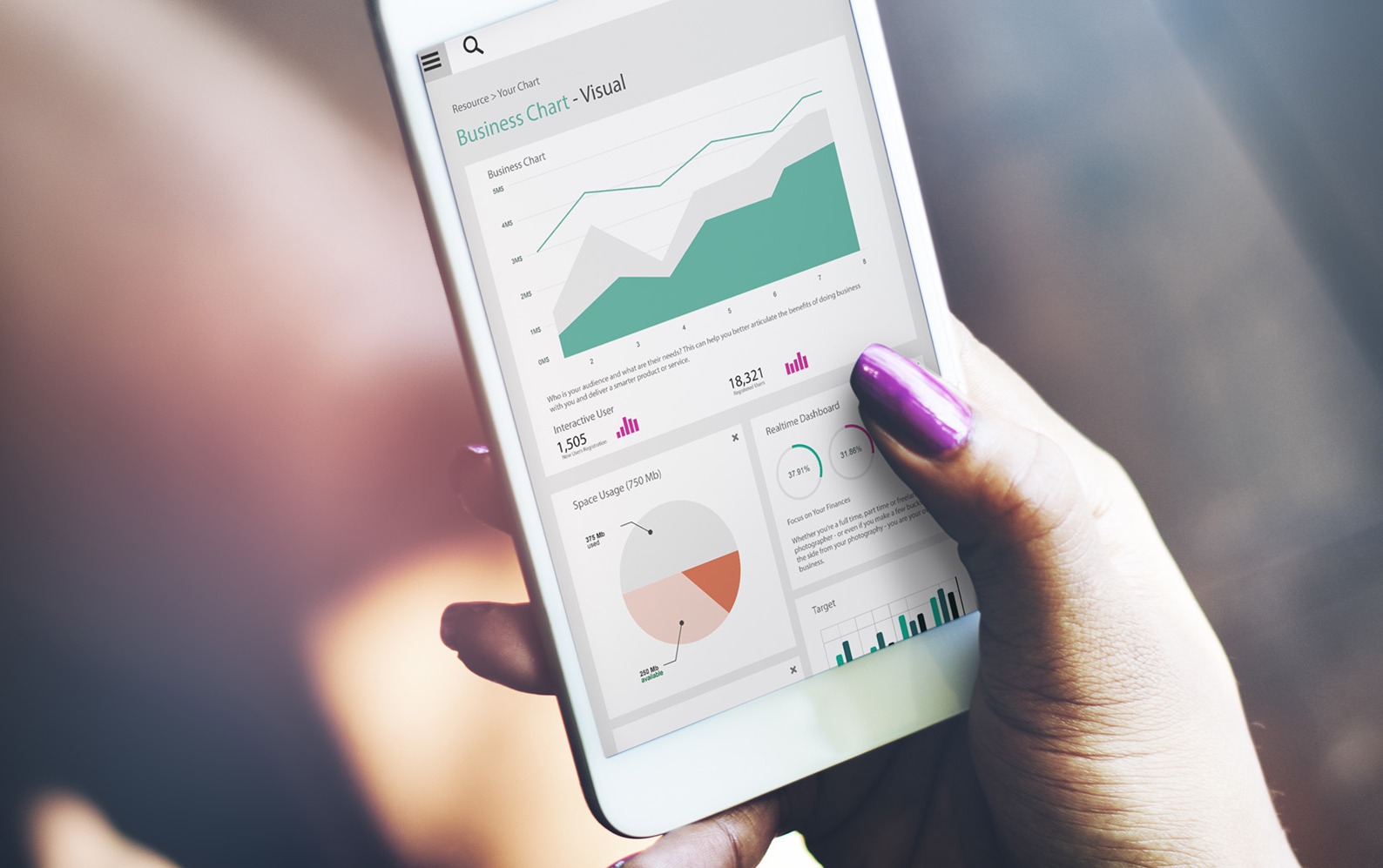7th Feb 2024

7th Feb 2024
We recommend using a balance scorecard to track and record marketing performance. This is a strategic planning and management tool used by organisations to align business activities to the vision and strategy of the business, improve internal and external communications, and monitor organisation performance against strategic goals. A balanced scorecard tends to consist of four perspectives: financial, customer, internal and innovation/growth.


Above is an example of one of our past balanced scorecards (with randomised data) showing our marketing metrics and performance.
Revenue: This is a pretty obvious one. Measuring your business’s revenue involves tracking sales figures over a specific period, typically monthly, quarterly, or annually. The end goal of all marketing strategies is almost always to increase revenue; so keeping track of it during and after different marketing campaigns and strategies enables you to understand what is most worthwhile and effective.
Lead Generation: This refers to the process of attracting and capturing potential customers or leads. Metrics for lead generation include the number of leads generated, lead quality, and cost per lead.
Lead Management: Once leads are captured, lead management involves nurturing them through the sales funnel. Metrics here include lead-to-customer conversion rate, lead response time, and lead engagement.
Sales Conversion Ratio: This metric measures the percentage of leads that ultimately convert into paying customers. It's calculated by dividing the number of conversions by the total number of leads and multiplying by 100.
Customer Retention and Churn Rate: Customer retention measures the percentage of customers who continue to do business with a company over time, while churn rate represents the percentage of customers who stop doing business. These metrics are vital for assessing customer satisfaction and loyalty.

Speaking Opportunities and PR: For businesses seeking to establish thought leadership and credibility, metrics for speaking opportunities and PR include the number of speaking engagements secured, media mentions, and sentiment analysis of press coverage.
Event Attendance and Engagement: For events and conferences, metrics include the number of attendees, engagement levels (such as booth interactions or session participation), and post-event surveys.
Event and Goal Scores: These metrics assess the success of specific events or marketing goals by assigning numerical scores based on predefined criteria.
Webinar Sign-ups: For webinar marketing, metrics include the number of registrations, attendance rates, and post-webinar engagement.

Digital performance encompasses a range of metrics including website traffic, social media engagement, email open rates, and conversion rates.
Engagement, Reach, Followers: These social media metrics measure the level of interaction with content, the number of people who see the content, and the growth of your social media audience. You can track these on the platform you use e.g. Facebook, however the best way is to use a third party platform such as Hootsuite and Brandwatch. These platforms allow you to view all of your social analytics in one place, as well as being able to choose which analytics you want to keep track of.
Email Open Rates and Goal Metrics: For email marketing campaigns, metrics include open rates, click-through rates, conversion rates, and email list growth.
Brand Awareness: Brand awareness measures the extent to which consumers are familiar with a brand. It can be gauged through surveys, social media mentions, and website traffic.

SERP (Search Engine Results Page): For businesses focused on search engine optimisation (SEO), SERP metrics include keyword rankings, organic traffic, and click-through rates from search results.
Website Health Score: This metric evaluates the overall performance and functionality of a website, including factors like page load speed, mobile responsiveness, and security.
Dwell Time: Dwell time measures the amount of time a visitor spends on a website before navigating away. It's an indicator of content relevance and user engagement.
Traffic: Traffic metrics include overall website visits, as well as traffic sources such as organic search, paid search, direct, and referral.
These can all be tracked through software such as Semrush and Wordstream.

Advertising: Advertising metrics include metrics such as impressions, clicks, click-through rates (CTR), and return on ad spend (ROAS). These metrics help assess the effectiveness of advertising campaigns
Campaign Impact: Finally, measuring the impact of marketing campaigns involves tracking key performance indicators (KPIs) related to each campaign's objectives, whether it's lead generation, brand awareness, or sales growth.

Effectively measuring your marketing performance is essential for optimising strategies, allocating resources effectively, and driving business growth. By understanding and tracking these key metrics, you can make informed decisions within your business and continually improve your marketing efforts.
As part of our marketing services, we can track these analytics for your business, as well as creating marketing campaigns, strategies, social media content and more. To learn more about what we can offer your business, click here.